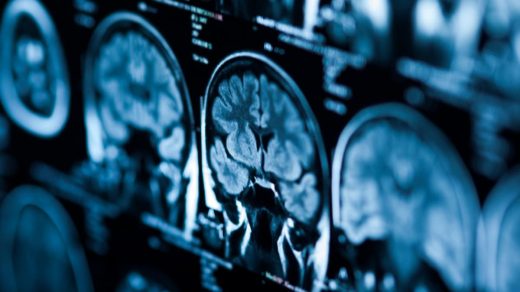
Researchers at Simon Fraser University are using advanced brain imaging to uncover why Parkinson’s drug levodopa doesn’t help all patients equally.
By using MEG (magnetoencephalography), they tracked real-time brain activity and discovered that the drug can sometimes activate the wrong brain regions—dampening its helpful effects. This insight could lead to personalized treatments tailored to each patient’s neural response, making therapies more precise and effective.
Why Levodopa Doesn’t Work for Everyone
Researchers at Simon Fraser University are exploring a powerful new way to look inside the brain—and it could change how Parkinson’s disease is treated.
In a recent study published in Movement Disorders, scientists investigated why levodopa, the most commonly used medication for Parkinson’s, doesn’t work equally well for every patient. Levodopa is a key part of SFU researchers teamed up with scientists at Sweden’s Karolinska Institute. Together, they used a cutting-edge technology called magnetoencephalography, or MEG, to watch brain activity in real time. This approach helps reveal how levodopa affects different regions of the brain.
“Parkinson’s is the second most prevalent neurodegenerative disease worldwide, and it is the most rapidly increasing, in terms of incidence,” says Alex Wiesman, assistant professor in biomedical physiology and kinesiology at SFU.
“Treating this disease, both in terms of helping people with their symptoms, but also trying to find ways to reverse the effects, is becoming more and more important.
“If clinicians can see how levodopa activates certain parts of the brain in a patient, it can help to inform a more personalised approach to treatment.”
Mapping the Brain’s Drug Response
The study was a collaboration with researchers at Karolinska Institute in Sweden, who used MEG to collect data from 17 patients with Parkinson’s disease – a relatively small sample size.
Researchers mapped participants’ brain signals before and after taking the drug, in order to see how and where the drug impacted brain activity.
MEG is an advanced non-invasive technology that measures the magnetic fields produced by the brain’s electrical signals.
It can help clinicians and researchers to study brain disorders and diseases, including brain injuries, tumors, epilepsy, autism, mental illness, and more.
A Tool for Off-Target Effects
Using this rare brain imaging technology, Wiesman and team developed a new analysis that lets them “search” the brain for off-target drug effects.
“With this new way of analyzing brain imaging data, we can track in real time whether or not the drug is affecting the right brain regions and helping patients to manage their symptoms,” says Wiesman.
“What we found was that there’s sometimes ‘off target’ effects of the drug. In other words, we could see the drug activating brain regions we don’t want to be activating and that’s getting in the way of the helpful effects.
“We found that those people who showed ‘off target’ effects are still being helped by the drug, but not to the same extent as others.”
What Parkinson’s Does to the Brain
Parkinson’s disease is a neurodegenerative disorder, meaning parts of the brain become progressively damaged over time. It affects predominately the dopamine-producing neurons in a specific area of the brain called the substantia nigra.
People with Parkinson’s disease may experience a range of movement-related symptoms, such as tremors, slow movement, stiffness, and balance problems.
Toward Personalized Parkinson’s Prescriptions
Wiesman hopes that a better understanding of how levodopa affects an individual’s brain signals could improve how drugs are prescribed to treat Parkinson’s.
“This might be really helpful for tracking individualized responses to these types of drugs and helping with prescribing and therapeutics,” he says.
“So maybe we try different medications, maybe we adjust dosages differently. And this helps clinicians get at that question of how we prescribe personalized medicine in a way that really helps the patient.
“The more we can personalize that approach, make it more expedient, make it a bit more specific to that person, the better.”
Beyond Parkinson’s: A New Imaging Frontier
This new type of brain imaging analysis is not only for studying Parkinson’s disease; any medications that affect brain signaling can be studied using the method developed by Wiesman and colleagues.
SFU’s ImageTech Lab, at the Surrey Memorial Hospital, is home to the only MEG in western Canada.
“We have this really fantastic technology right here at SFU, and combined with the new analysis approaches that we’re developing, it gives us a really unprecedented look into what’s happening in the brain,” says Wiesman.
“We can use this technology moving forward to study Parkinson’s disease in ways that no one has ever done before worldwide.
“Our next step is to take our new approach and apply it to a larger patient group. We also need to translate this research to more accessible brain imaging methods, like electroencephalogram (EEG).
“Ultimately, we want to make sure this technology is useful for a diverse population and more widely accessible to patients with Parkinson’s disease.”
Reference: “Cortical Effects of Dopamine Replacement Account for Clinical Response Variability in Parkinson’s Disease” by Alex I. Wiesman, Mikkel C. Vinding, Panagiota Tsitsi, Per Svenningsson, Josefine Waldthaler and Daniel Lundqvist, 18 April 2025, Movement Disorders.
DOI: 10.1002/mds.30200
Never miss a breakthrough: Join the SciTechDaily newsletter.
Get the source article here



